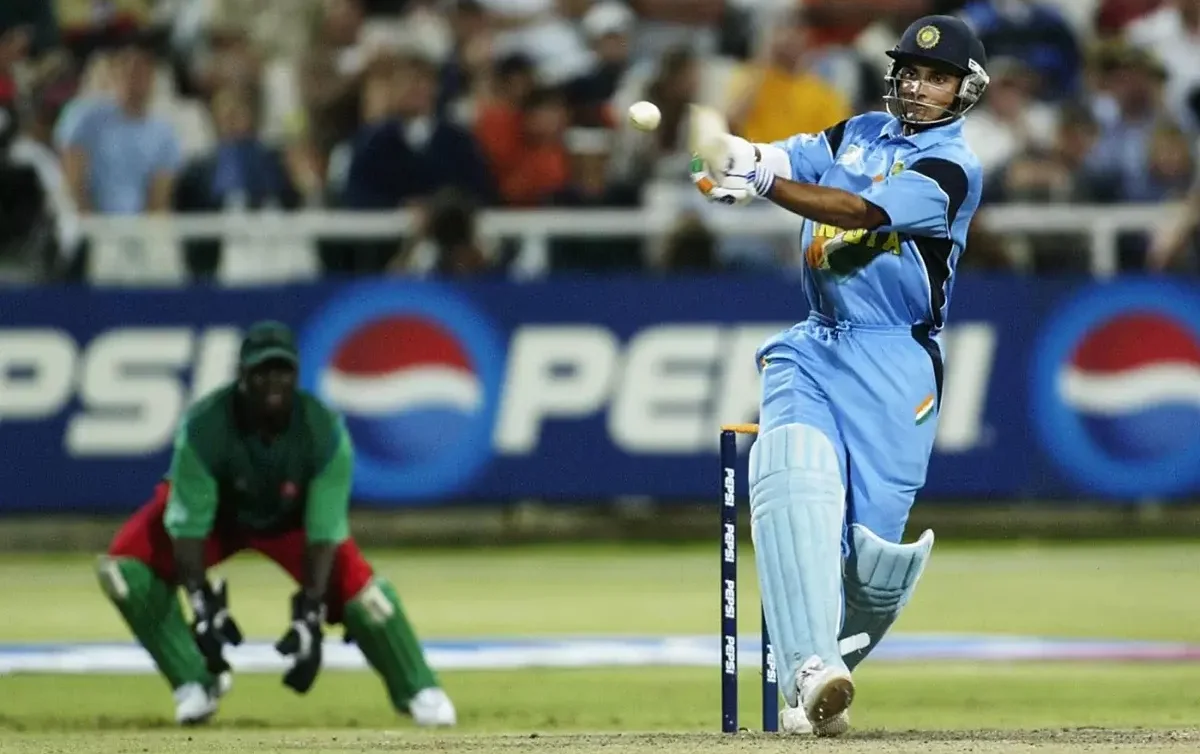The corridor of uncertainty in cricket is a metaphoric term that encapsulates the intricate dynamics between bowlers and batsmen during a match.
This elusive zone, characterized by unpredictable movement and placement of the ball, presents a formidable challenge to batsmen’s decision-making and technique.
In this article, we will explore the definition and significance of the corridor, delve into the role of swing and seam in its creation, examine strategies employed by bowlers to exploit it, and analyze its impact on batsmen’s performance.
Through an insightful and analytical lens, we aim to unravel the complexities surrounding this captivating aspect of cricket.
Key Takeaways
- The corridor of uncertainty refers to the area outside the off-stump that creates uncertainty for batsmen.
- Swing and seam determine the movement of deliveries in the corridor.
- Bowlers use swing mechanics and seam movement strategies to exploit the corridor.
- The corridor creates psychological pressure on batsmen, impacting their decision-making and techniques.
The Definition and Significance of the Corridor of Uncertainty
The corridor of uncertainty in cricket refers to the area just outside the off-stump where a delivery can cause uncertainty for the batsman due to its unpredictable movement.
This term is often used in relation to fast bowling and highlights the importance of accuracy in this aspect of the game.
Bowling accuracy plays a crucial role in creating the corridor of uncertainty as it requires the bowler to consistently land the ball in that specific region.
By doing so, they force the batsman into a dilemma – whether to play at or leave deliveries that may deviate off the seam or swing late.
The significance of the corridor of uncertainty lies in its ability to exploit any weaknesses or indecision on behalf of the batsman.
The unpredictability of a delivery within this area makes it challenging for them to judge whether they should defend, leave, or play an attacking shot. It puts pressure on their decision-making and increases their chances of making an error.
Understanding how swing and seam operate within this corridor is essential for both bowlers and batsmen. These factors contribute significantly to determining how much movement a delivery will generate after pitching.
Developing an understanding of these elements allows bowlers to manipulate their line and length effectively, while batsmen can anticipate potential variations and adjust their shots accordingly.
Transitioning into the subsequent section about understanding swing and seam without using ‘step’, delving deeper into these aspects sheds light on how they influence deliveries within this critical zone.
Understanding the Role of Swing and Seam in the Corridor
Understanding the role of swing and seam in the area between the off stump and the batsman’s body is crucial for bowlers in cricket.
Swing mechanics refer to the ability of a bowler to make the ball deviate from its expected trajectory through the air.
This can be achieved by manipulating factors such as grip, wrist position, release point, and seam orientation.
Seam movement strategies, on the other hand, involve making use of the seam’s natural irregularities to generate unpredictable deviations off the pitch.
Swing can be broadly categorized into two types: conventional swing and reverse swing. Conventional swing occurs when there is a difference in airflow across both sides of a smooth ball due to variations in surface roughness or shine.
This results in lateral movement towards or away from the batsman during flight. Reverse swing, on the other hand, is observed when an older ball with one side more rough than the other starts swinging in reverse direction.
Seam movement strategies primarily revolve around exploiting variations in bounce or sideways deviation off the pitch caused by irregularities on one side of a stitched seam.
Bowlers may aim to land deliveries on or close to this seam so that it interacts with different parts of the pitch leading to deviations that deceive batsmen.
Understanding these swing mechanics and seam movement strategies allows bowlers to exploit uncertainties within what is known as ‘the corridor’ – an area just outside off stump where balls are difficult for batsmen to decide whether to play at or leave alone.
In this section, we will explore various strategies employed by bowlers to exploit this corridor effectively.
Strategies Employed by Bowlers to Exploit the Corridor
Strategies employed by bowlers to exploit the corridor involve a combination of swing mechanics and seam movement strategies.
These tactics aim to place the ball in the ‘corridor of uncertainty,’ where it becomes challenging for batsmen to determine whether to play at or leave deliveries.
To maximize their effectiveness, bowlers utilize various bowling variations and carefully selected field placements.
Bowling variations play a crucial role in exploiting the corridor. By altering their grip, release point, or pace, bowlers can create different trajectories and movements on the ball.
For example, a slower delivery with backspin can induce batsmen into mistiming shots due to the reduced pace and change in bounce. Similarly, using cutters or off-cutters can deceive batsmen by making them misjudge line and length.
In addition to variations, field placements are strategically set up to apply pressure on batsmen while targeting specific areas within the corridor.
For instance, placing fielders in catching positions behind or beside the wicket encourages batsmen to edge deliveries into these regions.
Additionally, having a strong slip cordon allows for more aggressive lines outside off-stump as any edges will likely result in catches.
The impact of these strategies on batsmen’s decision-making and techniques is significant. Batsmen must constantly assess and adapt their shot selection based on the movement generated by bowlers within the corridor.
This requires sound judgment of line and length along with quick footwork adjustments to counteract swing or seam movement effectively without falling into traps set by bowlers’ tactical approaches.
The Impact of the Corridor on Batsmen’s Decision-making and Techniques
Batsmen’s decision-making and techniques are significantly influenced by the movement generated by bowlers within the targeted zone.
The corridor of uncertainty, characterized by an area just outside the off-stump where the ball can deviate unpredictably, poses a unique challenge for batsmen. Here is how it impacts their decision-making and techniques:
- Psychological pressure: The presence of the corridor creates psychological pressure on batsmen as they constantly have to assess whether to play or leave the ball. This adds an additional layer of mental strain, affecting their ability to make quick judgments.
- Adaptive batting techniques: Batsmen need to develop adaptive techniques to counter the challenges posed by the corridor. They may employ various strategies such as moving across their crease, adjusting their footwork, or altering their stance to effectively respond to different deliveries.
- Shot selection: The movement in the corridor influences batsmen’s shot selection decisions. They need to carefully evaluate whether it is safe to play attacking shots or if defensive strokes are more suitable based on the line and length of the delivery.
- Timing and balance: Batsmen must maintain good timing and balance when facing deliveries in the corridor. The movement generated by bowlers requires them to be precise with their movements and execute proper shot technique.
Overall, understanding and adapting to the impact of corridors of uncertainty is crucial for batsmen in order to successfully navigate through this challenging aspect of cricket gameplay.
Deciphering the Corridor of Uncertainty: Final Thoughts on Cricket’s Tactical Nuance
The corridor of uncertainty is a crucial aspect in cricket that tests the skills and decision-making abilities of both bowlers and batsmen. It refers to the area just outside the off-stump, where the ball can swing or seam unpredictably.
Bowlers aim to exploit this corridor by creating doubts in batsmen’s minds, leading to poor shot selection or even getting them out.
This tactic has proven effective, as statistics show that around 70% of wickets in Test cricket are taken in this corridor.
Frequently Asked Questions: Corridor Of Uncertainty
What are the different types of cricket pitches where the corridor of uncertainty is more effective?
Different types of cricket pitches, such as those with variable bounce or seam movement, can make the corridor of uncertainty more effective. Strategies to counter this include playing late, watching the ball closely, and adopting a proactive approach in shot selection.
How do bowlers adjust their line and length to exploit the corridor of uncertainty?
Anchored in the realm of cricket, bowlers can exploit the corridor of uncertainty by skillfully adjusting their line and length. By mastering techniques like seam movement, swing, and pace variations, they can challenge batsmen while overcoming challenges arising from pitch conditions and batsmen's footwork.
What are some common mistakes made by batsmen when facing deliveries in the corridor of uncertainty?
Common mistakes made by batsmen when facing deliveries in the corridor of uncertainty include playing away from the body, indecisiveness in footwork, lack of judgment to leave deliveries, and mistiming shots. Techniques to counter involve improving footwork, maintaining a solid defensive technique, and developing an understanding of line and length.
How does the corridor of uncertainty affect a batsman's footwork and shot selection?
The corridor of uncertainty poses challenges for a batsman's footwork and shot selection. It demands precise foot movement to judge the delivery's line and length, while shot selection must be cautious to avoid edging the ball to fielders.
Are there any specific batting techniques or skills that can help a batsman counter the corridor of uncertainty more effectively?
Batting techniques and shot selection play crucial roles in countering the corridor of uncertainty. Techniques like a solid forward defensive stroke, nimble footwork, and quick decision-making aid batsmen in effectively responding to deliveries within this challenging zone.











